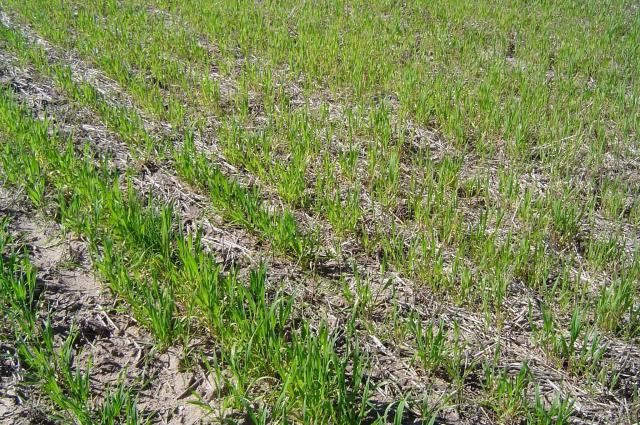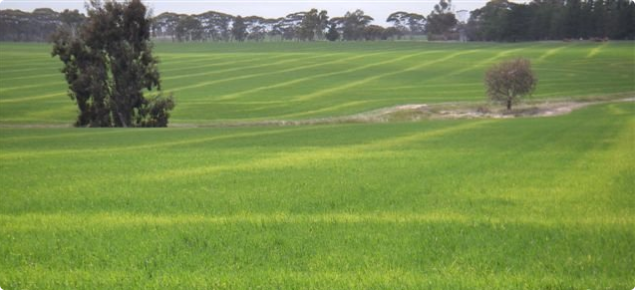Nutrient supply from organic matter
As a general rule-of-thumb, for every tonne of carbon (C) in soil organic matter, about 100 kilograms (kg) of nitrogen, 15 kg of phosphorus and 15 kg of sulfur becomes available to plants as the organic matter is broken down.
About 3% of the total soil organic matter pools turns over each year, so where we know how much carbon we have in soils, we can roughly estimate the potential supply of nutrients.
Example
There is 1300 tonnes of soil per hectare in the top 10cm, assuming a bulk density of 1.3 grams per cubic centimetre (g/cm3) and a soil organic carbon content of 1.5% (equivalent to 2.6% soil organic matter). We express tonnes of soil organic carbon per hectare as tC/ha.
- 1.5% organic carbon in soil with a bulk density of 1.3 = approximately 20 tC/ha to 10 cm depth
- If 3% is turning over per year, there is 0.6 tC/ha to 10 cm depth turned over
- 0.6 tC/ha x 100 (this is the kilograms of nitrogen available for each tonne of SOC turned over), there is about 60 kg of nitrogen per hectare (kgN/ha) released.
So per hectare in the top 10 cm of soil, we might expect 60 kg of nitrogen, 9 kg of phosphorous and 9 kg of sulfur resulting from biological cycling in a season. This varies across soil types and climate, and may not be sufficient to meet crop demands.
If information on soil organic carbon is available to greater depths, then the available nutients within the rooting zone of a plant can be calculated.
Not all of the nutrients released from organic matter breakdown will be available to plants: some is lost from the system (for example, leached), and some is taken up by microorganisms to support microbial activity and growth.
Nutrient release from freshly added residues (stubbles, green and brown mulches, manures) can also occur and depends on the quality of material being decomposed and its carbon to nitrogen ratio (C:N ratio). This will determine the size and rate of nutrient release.
Soil water is necessary for biological decomposition and nutrient release.
Cation exchange capacity (CEC)
The CEC value is a good indicator of the ability of a soil to hold on to and supply nutrients to plants. Soil CEC varies with soil texture and the percentage of humified organic matter:
- sands have a very low CEC – often less than 3 milliequivalents (meq)/100g
- clay can have a CEC of 10–200 meq/100g
- humified organic matter can have a CEC of 250–400 meq/100g.
In sandy soils, organic matter can be the main source of CEC. While humified organic matter has a very high CEC, it only makes up a small percentage of the soil mass.
The contribution of organic matter to the soil CEC declines with:
- increasing soil depth
- decreasing soil pH (that is, increasing soil acidity)
- increasing clay content.
Increases of 1% organic carbon as humified (stable) organic matter is likely to take decades.
Incorporating organic residues and soil nitrogen supply
Incorporating low nitrogen content organic material can induce nitrogen deficiency in crops (Figure 1).

An example: if a grain grower retains 2 t/ha of oat stubble with a C:N ratio of 80:1 and wants to estimate the likely impact of the stubble on soil nitrogen levels in the paddock, the grower can use the steps in Table 1.
| Step 1 | The amount of carbon present in organic matter | 2000 kg of stubble @ 45% carbon content | = 900 kgC/ha |
|---|---|---|---|
| Step 2 | The amount of nitrogen present in organic matter | Stubble contained 900kg of carbon and has a C:N ratio of 80:1 = 900 kg carbon ÷ 80 | = 11 kgN/ha |
| Step 3 | 25% of the carbon is used by microbes to grow (remaining 75% respired as CO2) | 900kg carbon x 0.25 = 225 kgC/ha Assume microbes have a C:N ratio of 12:1 and require 1kg of nitrogen for every 12 kg of carbon to grow. | = 225 ÷ 12 = 19 kg nitrogen |
| Step 4 | Compare the 2 nitrogen values | Fresh organic matter contained 11 kgN/ha and microbes required 19 kgN/ha to grow. So in this example, the nitrogen balance indicates microorganisms will use more nitrogen than is available from the residue, making nitrogen less available to plants. | = 11 – 19 = –8 kgN/ha |
A negative balance indicates that the nitrogen in the organic matter was less than the nitrogen required by the microbes. This nitrogen deficit will be sourced from the soil, making it unavailable for plants. If the nitrogen balance had been positive, a surplus of nitrogen would then become available to plants as there would be more nitrogen than required for microbial use.
This process takes place over months to years, so it is unlikely that the supply or immobilisation of nutrients will happen all at once. In general, the peak timing of nutrient tie-up lasts about 6–8 weeks and occurs soon after rainfall where residues are incorporated into soil. For further information see Immobilisation of soil nitrogen in heavy stubble loads.
For more information
The 'see also' and 'links' provide more information. You can also contact one of our staff mentioned below.



